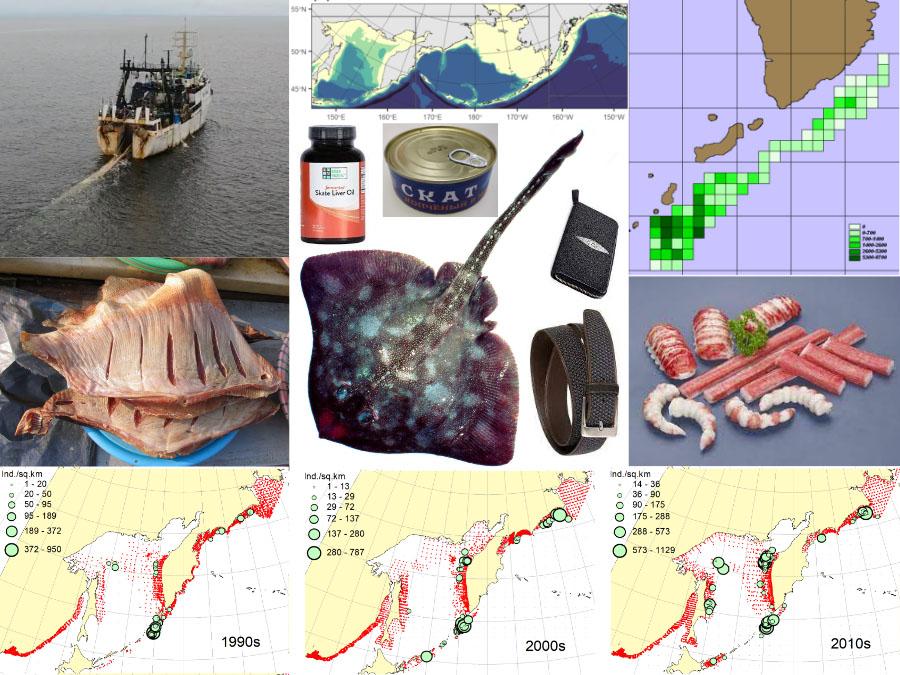
Deep-sea skates of the family Arhynchobatidae play an important role in deep-sea communities of the North Pacific Ocean. Many of these species are predatory, facilitating the transfer of energy and organic matter between different trophic levels. They consume valuable commercial species of fish and invertebrates, competing with humans in their fishing activities. In addition, stingrays are economically important in a number of countries, especially in Southeast Asia, where they serve as a source of food and industrial products (Fig. 1). They represent a promising resource for Russian fishing, being exported to the markets of China, Korea and Japan.
One of the most common species of deep-sea skates in the North Pacific Ocean is the white-blotches skates Bathyraja maculata, which is widespread from northern Japan to the eastern part of the Gulf. Alaska, including the Sea of Okhotsk and the Bering Sea, the Pacific waters of the Kuril and Aleutian Islands and eastern Kamchatka. Despite the constantly growing number of studies of North Pacific skates, including the white-blotched one, the features of its distribution and biology remain insufficiently studied.

Employees of the P.P. Shirshov Institute of Oceanology of RAS, A.N. Severtsov Institute of Ecology and Evolution of RAS and Rosrybolovstvo (Russian fishing) organizations analyzed long-term data over the last 40 years (since 1979) on catches of white-blotched skate, recorded mainly during Russian and American scientific surveys and covering the entire range of this species (Fig. 2). The purpose of the study was to obtain the most complete data on the features of its spatial and vertical distribution, temperature preferences, size composition, sex ratio and relative abundance dynamics during the period under review.
The densest concentrations of white-blotched skate were found along the continental slope of the Bering Sea, near the Aleutian Islands, in the eastern part of the Sea of Okhotsk and in the Pacific waters of southeastern Kamchatka and the northern Kuril Islands, where its maximum abundance was noted at depths of 400-700 m with a bottom temperature of 3.1 -4.5°C. During the cold months, individuals of this species migrate to greater depths for wintering, while during the warm period they feed at shallower depths. The length of the white-blotched skate in the catches ranged from 18 to 127 cm, with a predominance of individuals 50-100 cm long. No significant differences in the length and body weight of males and females were detected. The maximum fatness of individuals was noted in the autumn-winter period. The vast majority of study areas have seen significant increases in the relative abundance of white-blotched skate since the early 2000s.
The results obtained made it possible to identify areas of maximum concentrations of white-blotched skates in the North Pacific Ocean, which may be of practical importance for Russian fishing companies. The information obtained makes it possible to enrich our knowledge about the peculiarities of the biology of North Pacific deep-sea stingrays, which are necessary for the rational exploitation and conservation of their reserves.
Article imprint: Grigorov I.V., Kivva K.K., Volvenko I.V., Orlov A.M. 2024. Distribution, biology, and relative abundance of the understudied deep-water whiteblotched skate Bathyraja maculata // Progress in Oceanography. V. 226. Art. 103300.
